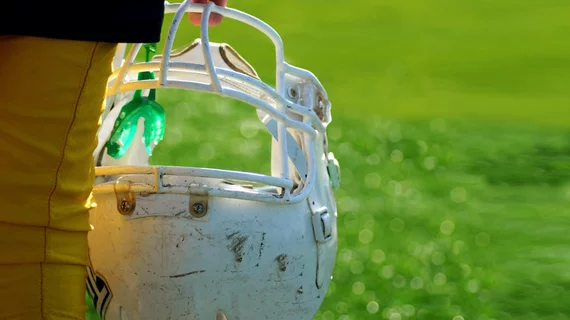Football players whose heads are repeatedly struck but suffer no concussions have white-matter abnormalities similar to those sustained by their concussed peers, according to a diffusion MRI-based study conducted at New York University and published in the May edition of the American Journal of Neuroradiology [1].
Lead author Sohae Chung, PhD, senior author Yvonne Lui, MD, and colleagues analyzed the cases of 78 college athletes in the Federal Interagency Traumatic Brain Injury Research registry.
The researchers split the sample into three cohorts to compare records of 24 football players with concussions against 26 without and to compare both groups against 28 controls who had not participated in contact sports.
Calculating metrics of diffusion tensor/kurtosis MRI and white-matter tract integrity, they found significant differences not only between concussed football players and healthy controls but also between healthy controls and not-concussed football players.
At the same time, white-matter differences between the concussed and the controls lessened over time, “suggesting partial recovery of microstructural changes during the study period,” Chung and co-authors comment in their discussion.
“Most interesting, persistent higher axial kurtosis in the sports-related concussion group was observed compared with the non-contact-sport controls mainly in the corpus callosum on six-month follow-up scans,” they write, “suggesting longer-term persistence of microstructural changes associated with sports-related concussion.”
The authors note the consistency of their findings with those from previous research showing the corpus callosum is “specifically implicated” in football players who have suffered concussions.
They suggest their key contribution is showing the same effect is present in contact-sport athletes with no history of concussion but a span of frequent low-impact head blows.
“Further study on the effect of repetitive head impact across time may provide insight into the temporal dynamics of injury in both sports-related concussion and athletes who may be exposed to repetitive head impact,” Chung et al. write.
The journal has posted the study in full for free.
More Coverage of Sports-Related Brain Injury:
Concussion education program collaborates with youth sports organization
Depression, history of prior injury make young football players more likely to sustain a concussion
Olympic skier pledges brain to concussion research
Horse racing officials update concussion protocols to include onsite medical professionals
Concussion expert wants boxing banned, says punt returns should be removed from football
Reference:
- S. Chung, J. Chen, T. Li, Y. Wang and Y.W. Lui, “Investigating Brain White Matter in Football Players with and without Concussion Using a Biophysical Model from Multishell Diffusion MRI.” AJNR, May 2022. DOI: https://doi.org/10.3174/ajnr.A7522

